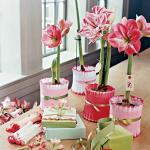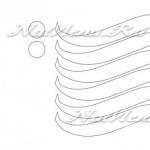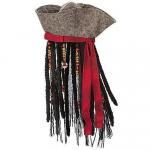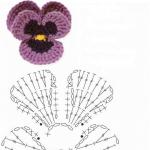Master class on manual labor. Paper construction "Helicopter"
Helipad. Working with paper and cardboard. Construction
Product: “Mukha” helicopter.
Tasks and materials in the workbook: “Helicopter “Fly””.
Lesson objectives: introduce students to the design of a helicopter; practice skills of independent work according to a plan, construction from paper and cardboard; introduce a new material - cork and ways of working with it.
Planned results: be able to design products from a group different materials; make a “Fly” helicopter.
New terms and concepts: helicopter, blade.
Resources and equipment. From the teacher: textbook, workbook, sample of the product “Helicopter “Mukha””, images of various helicopters.For students: textbook, workbook, copy paper, pencil, colored cardboard, scissors, awl, cork, cutter, glue, pen refill.
During the classes
“Our next stop is the Helipad.” What do you think we can learn at this stop? Let’s check our guess by looking at page 120 of the textbook. Read the text and look at the illustration. How does a helicopter fly? What are blades? How can "Can a helicopter fly, in what directions? What are its advantages over other air vehicles? Where can a helicopter be used?"
Additional material. The main advantage of helicopters is their maneuverability: helicopters are capable of vertical take-off, vertical landing, hovering in the air and even flying backwards. The helicopter can land (and take off) in any place where there is a flat area measuring one and a half times the diameter of the propeller. In addition, helicopters can carry cargo on an external sling, which makes it possible to transport very bulky cargo, as well as perform installation work.
The disadvantages of helicopters compared to airplanes include lower maximum speed, difficulty in controlling, high specific fuel consumption and, as a result, higher flight costs.
Next, students are asked to talk about the professions of a navigator, pilot, and aircraft designer, information about which they were asked to find at home. Checking the completion of this task takes place in the form of a discussion between students, which is controlled by the teacher.
We do it ourselves. “Before you start working on a product, you need to remember what it means to create a model, what a model is. (This is a sample of some product or a sample for manufacturing something.) Let's analyze the finished helicopter model. What materials and tools are needed to create it? Remember the rules and techniques for working with these materials and tools. What work technique should we use? What elements of the helicopter need to be prepared? (Blades, landing gear, wing, fuselage.) What marking and assembly method will you use? How will you design the product?
After analyzing the finished product, students familiarize themselves with the work plan and illustrations in the textbook (p. 121) and independently draw up their own work plan. When the plan is ready and corrected by the teacher, the children begin to do the work.
Marking. Based on the templates in the workbook (p. 64).
Open it up. Cut out the marked parts with scissors. The teacher must monitor compliance with safety precautions when working with an awl. Cut the cork strictly following the instructions on p. 121 textbooks. The teacher must tell students about the new material and its properties, demonstrate how and where to cut the cork.
Assembly. The helicopter assembly proceeds according to the plan in the textbook (p. 121) with the help of the teacher.
Finishing. Students can complete and design the composition using colored paper on their own.
Let's summarize. At the end of the lesson, it is advisable to hold an exhibition of students’ work and a conversation about what turned out to be the most difficult in working on the product.
Homework. Find information about the fastest air vehicle and the form of air transport that appeared first. Bring to your next lesson a balloon, tape, plastic cup, markers, napkins, decorative pins, colored cardboard, pencil, carbon paper, thick thread or air balloons, tape, threads, colored paper, scissors, foam rubber, ribbons
Abstract on technology “Model Aircraft”
Compiled by Ivakhina A.E.
Venue: 3rd grade, MBOU "Secondary school No. 3 with in-depth study of individual subjects" in Kotovsk, Tambov region
Date: 04/14/17
Helipad. Working with paper and cardboard. Construction
Product: “Mukha” helicopter.
Purpose: to familiarize students with the design of a helicopter; gaining experience in independent design.
Planned results: have experience and understanding of design; make a “Fly” helicopter.
Equipment: textbook, workbook, sample of the “Mukha Helicopter” product, images of various helicopters, portrait of Leonardo da Vinci.
During the classes
Motivation.
Since ancient times, man began to dream of flying. Leonardo da Vinci was the first scientist to seriously study this topic. In his manuscripts there are drawings and brief descriptions various aircraft. Today we are accustomed to the fact that a person has the ability to fly. Today I invite you to immerse yourself in the role of a helicopter designer.
Updating. Preparing students for practical work
And our textbook will help us with this, open page 120 of the textbook. Read the text and look at the illustration.
What makes a helicopter fly?
What are blades?
How can a helicopter fly, in what directions?
What are its advantages over other air vehicles?
Where can you use a helicopter?
The textbook describes the advantages of the aircraft. Why do you think, despite the presence of so many positive characteristics did the helicopters displace the plane? (carries fewer passengers.)
The disadvantages of helicopters compared to airplanes include lower maximum speed, difficulty in controlling, high specific fuel consumption and, as a result, higher flight costs.
Practical work on making a product;
Before you start working on a product, you need to remember what it means to create a model, what a model is. (This is a sample of a product or a sample for making something.)
Consider the finished model, what parts does it consist of? (Blades, landing gear, wing, fuselage.)
What materials and tools are needed to create it?
Let's remember safety precautions when working with scissors.
You cannot cut out parts on the go; you need to take a comfortable position at your desk;
It is necessary to remember how to correctly pass the scissors - with the rings towards a friend, the sharp blades are closed, you cannot hold them with the ends up;
When finishing work with scissors, they must be placed so that they do not hang from the desk;
You cannot run away with scissors in your hands;
It is better to cut not with the edge of the blades, but with the middle;
You should try not to drop the scissors, as this will damage them and could harm someone if they fall.
We will work with you according to plan. Who will read the plan on page 121 of the textbook?
Marking of parts. Based on the templates in the workbook (p. 64).
Manufacturing of parts. Cut out the marked parts with scissors. Monitoring compliance with safety regulations. The students cut the cork after the teacher demonstrates this action.
Assembly. The helicopter assembly proceeds according to the plan in the textbook (p. 121); the class works at the same pace as the teacher.
Finishing. Students can complete and design the composition using colored paper on their own.
Reflection. Summing up the lesson; evaluation of the work done.
Summing up the lesson is carried out through an exhibition of works and their evaluation by students (you can choose a jury for the children who did well, warning before that that the works are not signed and their task is to evaluate the work itself, and not a friend)
Cleaning the workplace.
Attached files
Municipal budgetary institution additional education
"Station of young technicians"
Lesson notes
Making the Mukha helicopter
with younger children school age in the association “Initial technical modeling”
Compiled by:
additional education teacher
Zakharova Tamara Grigorievna
Khanty-Mansiysk,
Lesson topic:
“Making the Mukha helicopter”
Purpose of the lesson:
make a model the simplest helicopter "Mukha"
Lesson objectives:
Educational:
introduce students to the sequence of manufacturing the simplest helicopter “Mukha”;
develop skills in manufacturing a simple helicopter: assembly, adjustment and launch;
consolidate skills in working with a ruler and scissors;
Educational:
develop:
observation, attention, visual memory;
small muscles of the hands;
the main functions of thinking: introspection, self-esteem, goal setting and motivation for knowledge.
Educational:
instill interest in technical creativity;
cultivate respect for Russian scientists, aircraft designers, and pilots;
cultivate perseverance, patience, accuracy in work;
foster a sense of mutual assistance
New terms and concepts: helicopter, blade.
Resources and equipment:
The teacher has: a sample of the product “Helicopter “Fly”, images of various helicopters.
Materials for work:
Landscape, colored paper
Tools for work:
Simple pencil;
Time should be spent on safety precautions to protect students and yourself from hurtful injuries.
Safety precautions when working with scissors:
When cutting, open the scissors wide and keep the ends away from you.
Be careful not to hurt the fingers of your left hand.
Turn the paper when cutting out the part.
Pass the scissors only closed, rings first.
When working, do not hold the scissors with the ends up.
Don't leave them open.
Do not use loose scissors.
Use scissors only in your own workplace.
Progress of the lesson.
1.Organizational moment
Psychological mood:
Good afternoon Guys, let's smile at each other. I'm glad you have good mood, because a smile is undoubtedly the key to success in any job, and I think that today will bring us all the joy of communicating with each other. Good luck to you! (children stand in a circle and say words in chorus)
Everything is beautiful in the sky ( raise their hands up)
Beautiful on earth ( hands down to the floor)
Everything around us is beautiful ( show hands around themselves)
Excellent and to me (point to themselves).
Determine what mood you came to class with, show it in color sticker : red is a bad mood, green is a good mood.
Explanation of new material
Teacher:
Guys, today we are starting new topic"Aeromodelling".
There's probably not a day that goes by that you guys don't see a plane in the sky. More than 10 million people use Aeroflot every year. Many of you have already flown on it. And today we will go into more detail with you by solving the riddle:
“I fly up without acceleration,
I remind you of a dragonfly.
Takes flight
Our Russian..." (helicopter)
You probably know, guys, that aviation is widely used in geological exploration, in the exploration of fish in the sea, slowly circling over an area of the sea, the helicopter finds schools of fish and points them out to the fishermen, to destroy harmful (insects) agricultural crops, the traffic police carries helicopter service, it is used in the sanitary service, as an ambulance, in various emergency situations, for example, when extinguishing complex fires, in many sectors of the national economy.
A helicopter is simply necessary in the city. The helicopter will help you get to the airfield located in the suburbs and transport arriving passengers to the very center of the city. Like a bird, it will perch on the flat roof of a high-rise building. Helicopters rescue people lost in the mountains, transport construction materials and even heavy boxes. Brings ships into the harbor, removes people from sinking ships. And much, much more could be said about the helicopter - a fast and brave machine, faithful assistant person.
The main advantage of helicopters is their maneuverability: helicopters are capable of vertical take-off, vertical landing, hovering in the air and even flying backwards. The helicopter can land (and take off) in any place where there is a flat area measuring one and a half times the diameter of the propeller. In addition, helicopters can carry cargo on an external sling, which makes it possible to transport very bulky cargo, as well as perform installation work. The disadvantages of helicopters compared to airplanes include lower maximum speed, difficulty in controlling, high specific fuel consumption and, as a result, higher flight costs.
MI-1. The first production helicopter in the USSR
IN  The helicopter is the most versatile of all aircraft. A helicopter doesn't have wings, but it does have screw. The rotor blades, rotating, throw back the flow of air, and due to this, the helicopter rises from its place without a run-up.
The helicopter is the most versatile of all aircraft. A helicopter doesn't have wings, but it does have screw. The rotor blades, rotating, throw back the flow of air, and due to this, the helicopter rises from its place without a run-up.
It flies due to one or several horizontally located propellers with long blades. At the same time, it can move forward, backward, sideways and even hover motionless in the air. Like an airplane, it does not need an airfield runway, since it takes off and lands vertically.
M  By the way, this was also predicted Leonardo da Vinci, a great Italian artist and inventor back in the 15th century. He designed the world's first helicopter. But the first real helicopter project was the M.V. project. Lomonosov. He called it an “aerodynamic machine” capable of rising vertically. Its idea is simple: two small propellers should rotate in different directions relative to one common vertical axis and create lifting force. It was the first device to prove the possibility of vertical flight using horizontally rotating propellers.
By the way, this was also predicted Leonardo da Vinci, a great Italian artist and inventor back in the 15th century. He designed the world's first helicopter. But the first real helicopter project was the M.V. project. Lomonosov. He called it an “aerodynamic machine” capable of rising vertically. Its idea is simple: two small propellers should rotate in different directions relative to one common vertical axis and create lifting force. It was the first device to prove the possibility of vertical flight using horizontally rotating propellers.
KA-52 Alligator. There is no tail rotor.
Aeromodelling is the design, construction and launch of flying models - balloons, kites, gliders, airplanes and rockets.
Many of the famous aircraft designers, pilots, and cosmonauts began their journey with an aircraft modeling circle.
The aircraft modellers were the aircraft designer twice Hero of Socialist Labor - Alexander Sergeevich Yakovlev, Hero of Socialist Labor - Oleg Konstantinovich Antonov, three times Hero Soviet Union– Alexander Ivanovich Pokryshkin, pilot-cosmonaut Yuri Alekseevich Gagarin and others.
I would like to name a few names of famous aircraft designers and helicopter creators:
Doctor of Technical Sciences, Hero of Socialist Labor, Laureate of the USSR State Prize Nikolai Ilyich Kamov;
The famous helicopter designer Mikhail Leontievich MIL produced Mi series helicopters, which included about 30 models
(the most famous are Mi-2, Mi-4, Mi-6, Mi-8, Mi-10, Mi-12, Mi-24).
Marat Nikolaevich Tishchenko and others.
4 .State the topic and purpose of the lesson.
Before you start working, you need to remember what it means to create a model, what a model is. (This is a sample of a product or a sample for making something.)
Before moving on to the practical lesson, let's answer a few questions (use of computer technology):
Where do all the aircraft land? aerodrome
What is the name of an aircraft that has wings and a tail? Airplane
What is the name of an aircraft with a propeller? Helicopter
What is the name of an aircraft that flies without a motor? Glider(the glider differs from other aircraft in that it does not have a motor)
How can we describe in one word everything that we just guessed?
Right, aviation .
5. Sequence of manufacturing the Mukha helicopter model.
6. Practical work:
Making a “FLY” helicopter from paper

Very funny model! When a helicopter descends to the ground, it does not fall sharply down, but spins around its axis. This happens because our model has blades. The air flows around these blades and the helicopter lands smoothly and beautifully. The model is easy to manufacture. Its only difficulty is the need to divide the paper into equal parts using a pencil and ruler. Schoolboy junior classes such a task is not only feasible, but also useful. Having learned to confidently fold the model, you will be able to do without a ruler, doing all the work “by eye”.

Draw on a sheet of paper and cut out a strip of paper measuring 21x5 cm. Draw a vertical line in the middle. You don’t have to draw a line, but mark it with a fold - fold the strip in half, then straighten it - that’s the line drawn
A third of the strip – 7 cm – bend downwards

Unfold the paper and make a cut in the middle, up to the fold line.

Draw a line just below the fold line. Divide this line into four segments.

Make cuts on both sides along the marked line, cutting a quarter of the width of the paper on each side.

Fold one side towards the center and smooth it out well. Fold the other side in the same way.

Bend the bottom part as shown in the picture.

Secure the bottom of the helicopter with a paper clip. Spread the blades. The model is ready to fly!

To launch the model, you just need to drop it from a height of at least your outstretched arm. But if you climb onto a chair or table, it will be more interesting.

7. Physical exercise. Launch of manufactured models
(The teacher shows the correct techniques for launching the model, observes the launch of each student’s model, and helps if necessary)
8. Summing up the lesson. Repetition of theoretical material.
What helicopter model did we make today?
What makes a helicopter fly?
What are blades?
How can a helicopter fly, in what directions?
What are its advantages over other air vehicles?
Where can you use a helicopter?
An exhibition of student work and a conversation about what turned out to be the most difficult part of working on the product.
9. Reflection. What planet are you on now?
10. Cleaning the workplace
(The teacher supervises the cleaning of workplaces by children).
Bibliography
1. Fetzer V.L. "Aviation in Models". Publishing house Izhevsk "Udmurtia" 1992
2. Ermakov. A. M. “The simplest aircraft models.” ed. M.: Education, 1998. - 208 p.
3. Zamotin, O.E. Create, invent, try [text]/ O.E. Zamotin, R.V. Zaripov, E.F. Ryabchikov - M.: Education, 1986. - 144 p.
4. Zavorotov, V. From idea to model [text] / V. Zavorotov. - M.: Education, 1988. - 160 p.
5. Marakhovsky S.D., Moskalev V.F. "The simplest flying models." Popular science publication. Moscow 1988
Sources of illustrations:
1.Leonardo da Vinci - Wikipediaru.wikipedia.org/wiki/Leonardo
2.Helicopters - Wikipedia
avia. pro/ blog/ helicopter
Elena Goryacheva
Master class on manual labor Paper making« Helicopter»
Target: development of productive activities.
Tasks:
1. Improve the ability to work from a finished pattern.
2. Consolidating the ability to create from paper volumetric figures.
3. Development of aesthetic taste.
Material required for work: color paper, colored cardboard, pencil, glue stick, thread, beads, popsicle sticks, black marker, sewing needle.

Sequence of work:
1. Using the pattern, trace and cut out a cabin from cardboard of any color helicopter – 2 parts.

2. Using a pattern from cardboard of any color, trace and cut out the chassis helicopter – 2 parts.

3. Trace around the pattern and cut out from blue paper glass for helicopter cabin – 2 parts.

4. Using the pattern, trace and cut out the tail propeller from red cardboard - 2 parts.

5. Trace and cut according to the pattern helicopter helicopter made of red cardboard - 2 parts.

6. Cut out a nose from cardboard of any color - 2 parts.

7. Cut from white paper eyes -2 details.

8. Cut out small circles - decorations, from paper any color folded like an accordion.
Let's start assembly helicopter.
1. We glue the chassis in the upper part to the middle of the racks, bifurcating the lower part.

2. Glue the 2 parts of the cabin together, gluing the landing gear between them at the bottom of the cabin and a thread at the top.

3. On both sides helicopter glue the cockpit glass.

4. Glue the nose on both sides helicopter, gluing both parts.

5. To the tail helicopter glue the propeller parts glued together.
6. Glue the eyes on both sides and draw a pupil with a marker.
7. Glue the two propeller parts together.

8. On a thread glued to the top of the cabin, use a needle to string a bead and two parts of the propeller glued together.

9. Glue circles - decorations - on both sides of the cabin.

The helicopter is ready.
We attach an ice cream stick to the upper end of the thread, with which you can control by helicopter.

Publications on the topic:
Goal: to teach children to cut out appliqué parts along a drawn outline, to put together a whole from individual parts, and to strengthen their ability to work.
Form of OOD: subgroup, individual. Goal: creating a pincushion as a gift for mom. Objectives: introduce children to the rules of safe handling.
To make a peony flower we need - scissors, paper desired color, heat gun (or thread, bamboo stick and for fun.
Notes on manual labor “Tulip made of paper” Goal: To teach children to fold paper in different directions. Develop an eye, fine motor skills hands, children's speech...
After listening to the song “Two cheerful geese lived with grandma,” the children and I decided to please grandma and make a lot of geese. The first stage of our work.
On the eve of Easter, we decided to hold a master class together with parents. For every holiday we make different ones.
Objectives: to introduce students to the design of a helicopter; practice skills of independent work according to plan, construction from paper and cardboard; introduce a new material - cork and ways of working with it.
Planned results: be able to design products from a group of different materials; make a “Fly” helicopter.
New terms and concepts: helicopter, blade.
Resources and equipment:
The teacher has a sample of the product “Helicopter “Fly””, images of various helicopters.
Students have: carbon paper, pencil, colored cardboard, scissors, awl, cork, cutter, glue, pen refill.
Progress of the master class
I. Update
Our favorite assistants are present at our lesson: Anya and Vanya, they offer us a stop called “Helipad”.

- What do you think we can learn at this stop?
- Let's check our assumption.
- Read the text and look at the illustration. What makes a helicopter fly?
- What are blades?
- How can a helicopter fly, in what directions?
- What are its advantages over other air vehicles?
- Where can you use a helicopter?
Additional material.
The main advantage of helicopters is their maneuverability: helicopters are capable of vertical take-off, vertical landing, hovering in the air and even flying backwards. A helicopter can land (and take off) in any place where there is a flat area measuring one and a half times the diameter of the propeller. In addition, helicopters can carry cargo on an external sling, which makes it possible to transport very bulky cargo, as well as perform installation work. The disadvantages of helicopters compared to airplanes include lower maximum speed, difficulty in control, high specific fuel consumption and, as a result, higher flight costs.
Tell us about the professions of navigator, pilot and aircraft designer, information about which you were asked to find at home. Checking the completion of this task takes place in the form of a discussion between students, which is controlled by the teacher.
II. We do it ourselves.

Before you start working on a product, you need to remember what it means to create a model, what a model is. (This is a sample of a product or a sample for making something.)
- Let's analyze the finished helicopter model. What materials and tools are needed to create it?
- Remember the rules and techniques for working with these materials and tools.
- What work technique should we use?
- What elements of the helicopter need to be prepared? (Blades, landing gear, wing, fuselage.)
- What marking and assembly method will you use?
- How will you design the product?
- Let's get acquainted with the work plan and illustrations and draw up your own work plan.


When the plan is ready and adjusted, we will begin the work.
Marking. By templates:

Open it up. Cut out the marked parts with scissors. Monitor compliance with safety precautions when working with an awl. Cut the cork, strictly following the instructions. Tell students about the new material and its properties, demonstrate how and where to cut the cork.
Assembly. The helicopter assembly proceeds according to plan with the help of the teacher.
Finishing. Students can complete and design the composition using colored paper on their own.
III. Let's summarize.
An exhibition of student work and a conversation about what turned out to be the most difficult part of working on the product.
IV. Homework.
Find information about the fastest air transport and the type of air transport that appeared first.
Bring to your next lesson a balloon, tape, plastic cup, markers, napkins, decorative pins, colored cardboard, pencil, carbon paper, thick thread or balloons, tape, thread, colored paper, scissors, foam rubber, ribbons.






